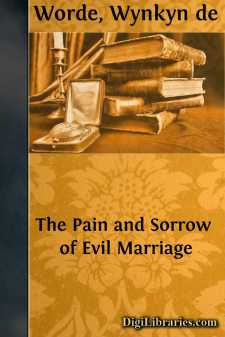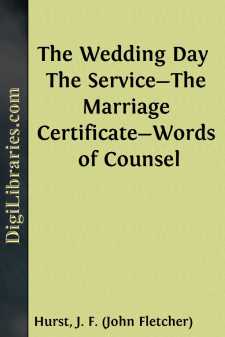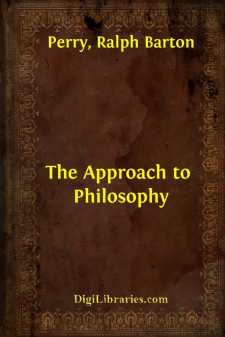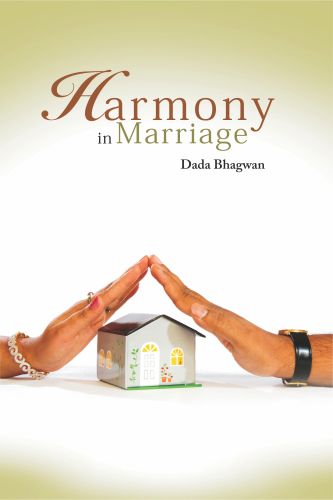Categories
- Antiques & Collectibles 13
- Architecture 36
- Art 48
- Bibles 22
- Biography & Autobiography 813
- Body, Mind & Spirit 142
- Business & Economics 28
- Children's Books 16
- Children's Fiction 13
- Computers 4
- Cooking 94
- Crafts & Hobbies 4
- Drama 346
- Education 46
- Family & Relationships 57
- Fiction 11829
- Games 19
- Gardening 17
- Health & Fitness 34
- History 1377
- House & Home 1
- Humor 147
- Juvenile Fiction 1873
- Juvenile Nonfiction 202
- Language Arts & Disciplines 88
- Law 16
- Literary Collections 686
- Literary Criticism 179
- Mathematics 13
- Medical 41
- Music 40
- Nature 179
- Non-Classifiable 1768
- Performing Arts 7
- Periodicals 1453
- Philosophy 64
- Photography 2
- Poetry 896
- Political Science 203
- Psychology 42
- Reference 154
- Religion 513
- Science 126
- Self-Help 84
- Social Science 81
- Sports & Recreation 34
- Study Aids 3
- Technology & Engineering 59
- Transportation 23
- Travel 463
- True Crime 29
The Pain and Sorrow of Evil Marriage
by: Wynkyn de Worde
Description:
Excerpt
INTRODUCTION.
There are three early humorous tracts in verse upon the subject of marriage, all printed by Wynkyn de Worde: only one of them has a date, 1535, but we can have little difficulty in assigning the two others to about the same period. They have the following titles.
1. “A complaynt of them that be to soone maryed.”
2. “Here begynneth the complaynte of them that ben to late maryed.”
3. “The payne and sorowe of evyll maryage.”
The last we have printed entire in the following pages, and of the two others, Dr. Dibdin has inserted a brief account in his edition of Ames (Typ. Ant. 384). We propose to go more at large into a description of the contents of these ancient and facetious relics.
We have reason to believe that the two first are translations; and in default of English expressions, especially in the second piece, the writer has employed, and sometimes anglicised, several of the French words, which he thought better adapted to his purpose. To this production, “the Auctour,” as he calls himself, has subjoined a sort of epilogue, which ingeniously includes the printer’s colophon, as follows:
“Here endeth the complaynt of to late maryed,For spendynge of tyme or they a borde
The sayd holy sacramente have to longe taryed,
Humane nature tassemble and it to accorde.
Enprynted in Fletestrete by Wynkyn de Worde,
Dwellynge in the famous cyte of London,
His hous in the same at the sygne of the Sonne.”
At the conclusion of the “complaynt of them that be to soone maryed,” the date of 1535 has also been interwoven. Wynkyn de Worde’s will was proved the 19th January, 1534, which, according to our present mode of computing the year, would be the 19th January, 1535; so that either this piece came out after his death, or it was printed just before that event, and in anticipation of the new year, which would not then commence until the 26th March.
Each of the tracts has a wood-cut on the titlepage, but only that called “The payne and sorowe of evyll maryage,” can be said to have anything to do with the subject, and that no doubt had been used for other works: it represents a marriage ceremony,—a priest joining the hands of a couple before the altar.
The “complaynt of them that be to soone maryed” opens with the following stanza:
“For as moche as many folke there beThat desyre the sacrament of weddynge,
Other wyll kepe them in vyrgyny[t]e,
And toyll in chastyte be lyvynge;
Therfore I wyll put now in wrytynge
In what sorowe these men lede theyr lyves,
That to soone be coupled to cursed Wyves.”
Thence the author proceeds to give some very sage and serious advice upon the evil of too hasty matrimonial alliances, but he does not attempt much humour until he comes to describe the conduct of his wife (for he writes in the first person throughout) when they had been married eight days: until then he had not been “chydden ne banged,” but he suffered for it bitterly afterwards;
“But soone ynoughe I had assayesOf sorowe and care that made me bare.”
It may here be observed that the stanza is peculiar, and consists of eight lines, the four first lines rhyming alternately, the fifth rhyming with the fourth, then a line with a new rhyme, while the seventh line rhymes with the third and fourth, and the eighth with the sixth....







